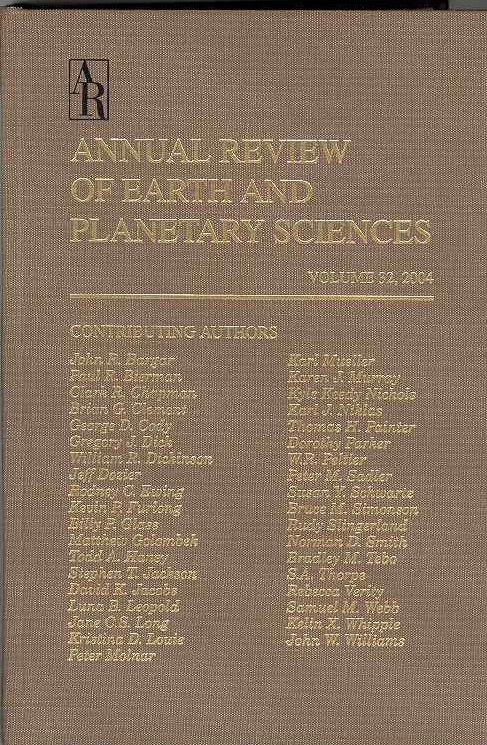Fast and Slow Subduction Earthquakes in Latin America
IF 13
1区 地球科学
Q1 ASTRONOMY & ASTROPHYSICS
Annual Review of Earth and Planetary Sciences
Pub Date : 2025-02-20
DOI:10.1146/annurev-earth-040522-121945
引用次数: 0
Abstract
Most seismicity in Latin America is controlled by the subduction process. Different zones have hosted earthquakes of magnitudes larger than Mw 8.5 that repeat every several centuries. Events around Mw 8.0 are more frequent; since the beginning of the twentieth century, some collocated earthquakes have occurred with differences of decades, which allows for comparison of old and modern seismological records. The rupture zones that have hosted mega-earthquakes continue to produce smaller earthquakes after three centuries. Therefore, the process of unlocking in the Latin America subduction zone occurs by giant (≥Mw 9.0), mega- (9.0 > Mw ≥ 8.5), and large (8.5 > Mw ≥ 7.5) earthquakes, and interaction between these events is not yet fully understood. We have less understanding of the earthquakes that occurred in the oceanic plates, which have not been correctly recorded due to poor seismological instrumentation and lack of knowledge about subduction during the first half of the twentieth century in Latin America. Slow earthquakes have been observed in some zones of Latin America, several of them with recurrence periods of a few years, as well as tectonic (nonvolcanic) tremors and low-frequency and very low-frequency earthquakes. How do these slow slip manifestations relate to ordinary earthquakes? This question is still difficult to answer for Latin America given the lack of dense geodetic and seismic networks that allow identification of all the slow earthquakes that likely occur more frequently than currently reported.拉丁美洲的快、慢俯冲地震
拉丁美洲的大多数地震活动是由俯冲过程控制的。不同的地区发生过震级大于8.5兆瓦的地震,每隔几个世纪就会重复一次。Mw 8.0附近的事件更为频繁;自20世纪初以来,一些同时发生的地震发生了几十年的差异,这使得可以比较古代和现代地震记录。曾经发生过大地震的破裂带在三个世纪后继续产生较小的地震。因此,拉丁美洲俯冲带的解锁过程发生在巨型(≥Mw 9.0)、巨型- (9.0 >;Mw≥8.5),大(8.5 >;这些事件之间的相互作用尚未完全了解。我们对发生在大洋板块上的地震了解较少,由于地震仪器的不完善和对拉丁美洲20世纪上半叶俯冲作用的缺乏了解,这些地震没有被正确记录下来。在拉丁美洲的一些地区已经观察到缓慢的地震,其中一些地震的重复周期为几年,以及构造(非火山)震动和低频和极低频地震。这些慢滑现象与普通地震有何关系?由于拉丁美洲缺乏密集的大地测量和地震网络,无法识别所有可能比目前报道的更频繁发生的缓慢地震,因此这个问题仍然难以回答。▪拉丁美洲俯冲带具有类似的地震特征。它们可以发生大震级地震,也可以发生各种慢震。■迄今为止,智利发生了9级以上的大地震,几个拉丁美洲国家也发生了特大地震。▪随着地震和大地测量网变得更加密集,将在拉丁美洲发现更多的慢震。
本文章由计算机程序翻译,如有差异,请以英文原文为准。
求助全文
约1分钟内获得全文
求助全文
来源期刊

Annual Review of Earth and Planetary Sciences
地学天文-地球科学综合
CiteScore
25.10
自引率
0.00%
发文量
25
期刊介绍:
Since its establishment in 1973, the Annual Review of Earth and Planetary Sciences has been dedicated to providing comprehensive coverage of advancements in the field. This esteemed publication examines various aspects of earth and planetary sciences, encompassing climate, environment, geological hazards, planet formation, and the evolution of life. To ensure wider accessibility, the latest volume of the journal has transitioned from a gated model to open access through the Subscribe to Open program by Annual Reviews. Consequently, all articles published in this volume are now available under the Creative Commons Attribution (CC BY) license.
 求助内容:
求助内容: 应助结果提醒方式:
应助结果提醒方式:


